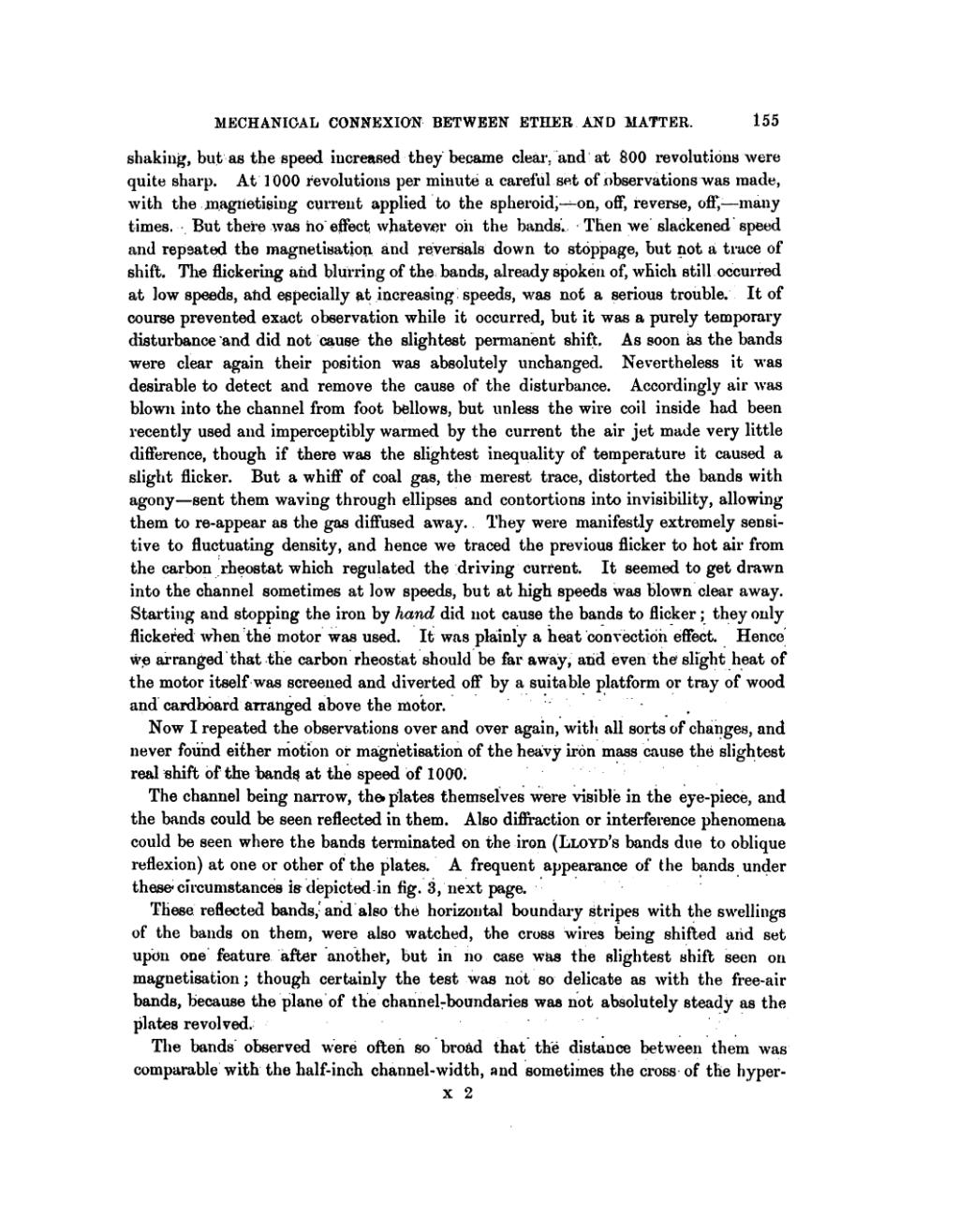shaking, but as the speed increased they became clear, and at 800 revolutions were quite sharp. At 1000 revolutions per minute a careful set of observations was made, with the magnetising current applied to the spheroid, – on, off, reverse, off, – many times. But there was no effect whatever on the bands. Then we slackened speed and repeated the magnetisation and reversals down to stoppage, but not a trace of shift. The flickering and blurring of the bands, already spoken of, which still occurred at low speeds, and especially at increasing speeds, was not a serious trouble. It of course prevented exact observation while it occurred, but it was a purely temporary disturbance and did not cause the slightest permanent shift. As soon as the bands were clear again their position was absolutely unchanged. Nevertheless it was desirable to detect and remove the cause of the disturbance. Accordingly air was blown into the channel from foot bellows, but unless the wire coil inside had been recently used and imperceptibly warmed by the current the air jet made very little difference, though if there was the slightest inequality of temperature it caused a slight flicker. But a whiff of coal gas, the merest trace, distorted the bands with agony — sent them waving through ellipses and contortions into invisibility, allowing them to re-appear as the gas diffused away. They were manifestly extremely sensitive to fluctuating density, and hence we traced the previous flicker to hot air from the carbon rheostat which regulated the driving current. It seemed to get drawn into the channel sometimes at low speeds, but at high speeds was blown clear away. Starting and stopping the iron by hand did not cause the bands to flicker; they only flickered when the motor was used. It was plainly a heat convection effect. Hence we arranged that the carbon rheostat should be far away, and even the slight heat of the motor itself was screened and diverted off by a suitable platform or tray of wood and cardboard arranged above the motor.
Now I repeated the observations over and over again, with sorts of changes, and never found either motion or magnetisation of the heavy iron mass cause the slightest real shift of the bands at the speed of 1000.
The channel being narrow, the plates themselves were visible in the eye-piece, and the bands could be seen reflected in them. Also diffraction or interference phenomena could be seen where the bands terminated on the iron (Lloyd’s bands due to oblique reflexion) at one or other of the plates. A frequent appearance of the bands under these circumstances is depicted in fig. 3, next page.
These reflected bands, and also the horizontal boundary stripes with the swellings of the bands on them, were also watched, the cross wires being shifted and set upon one feature after another, but in no case was the slightest shift seen on magnetisation; though certainly the test was not so delicate as with the free-air bands, because the plane of the channel-boundaries was not absolutely steady as the plates revolved.
The bands observed were often so broad that the distance between them was comparable with the half-inch channel-width, and sometimes the cross of the hyperbola-system
